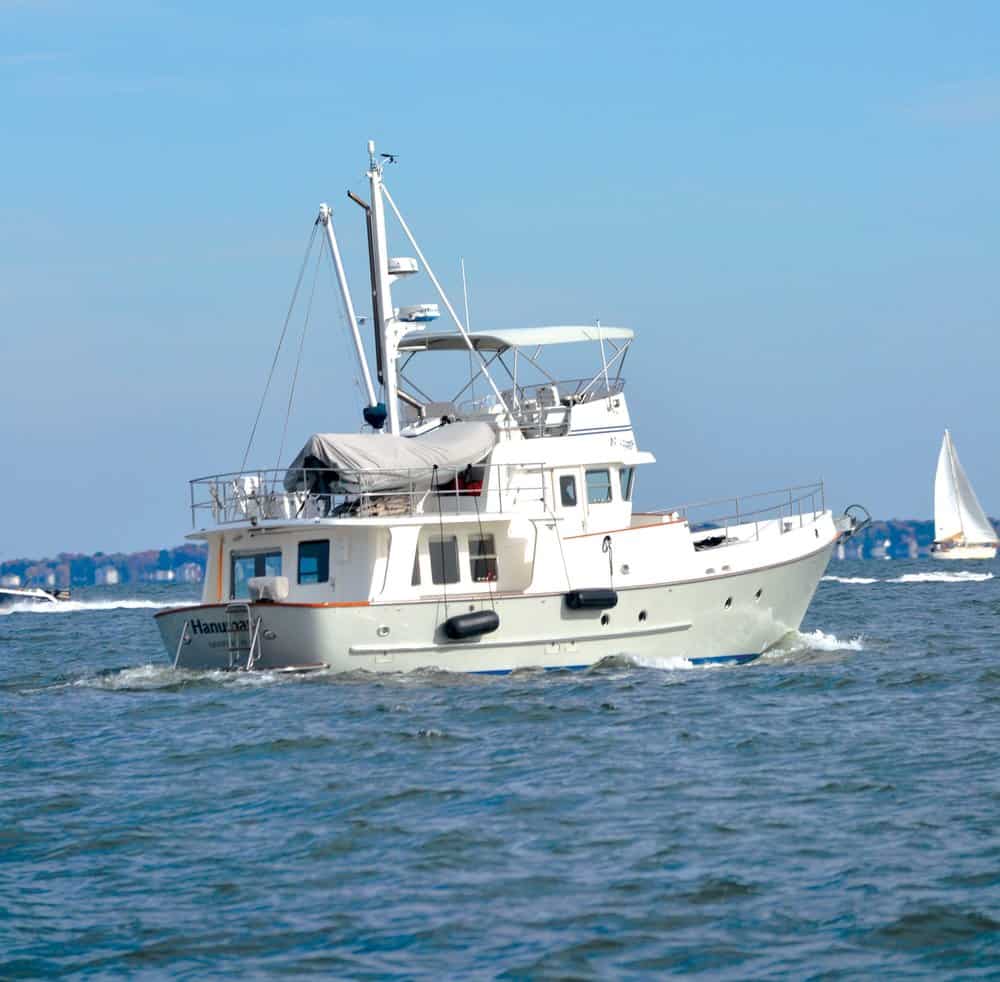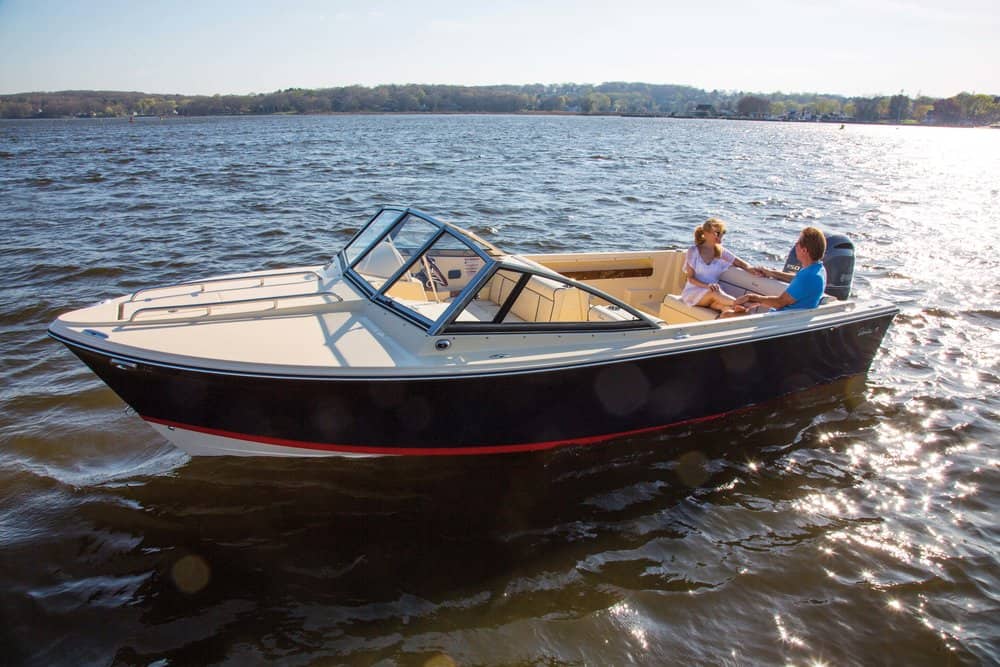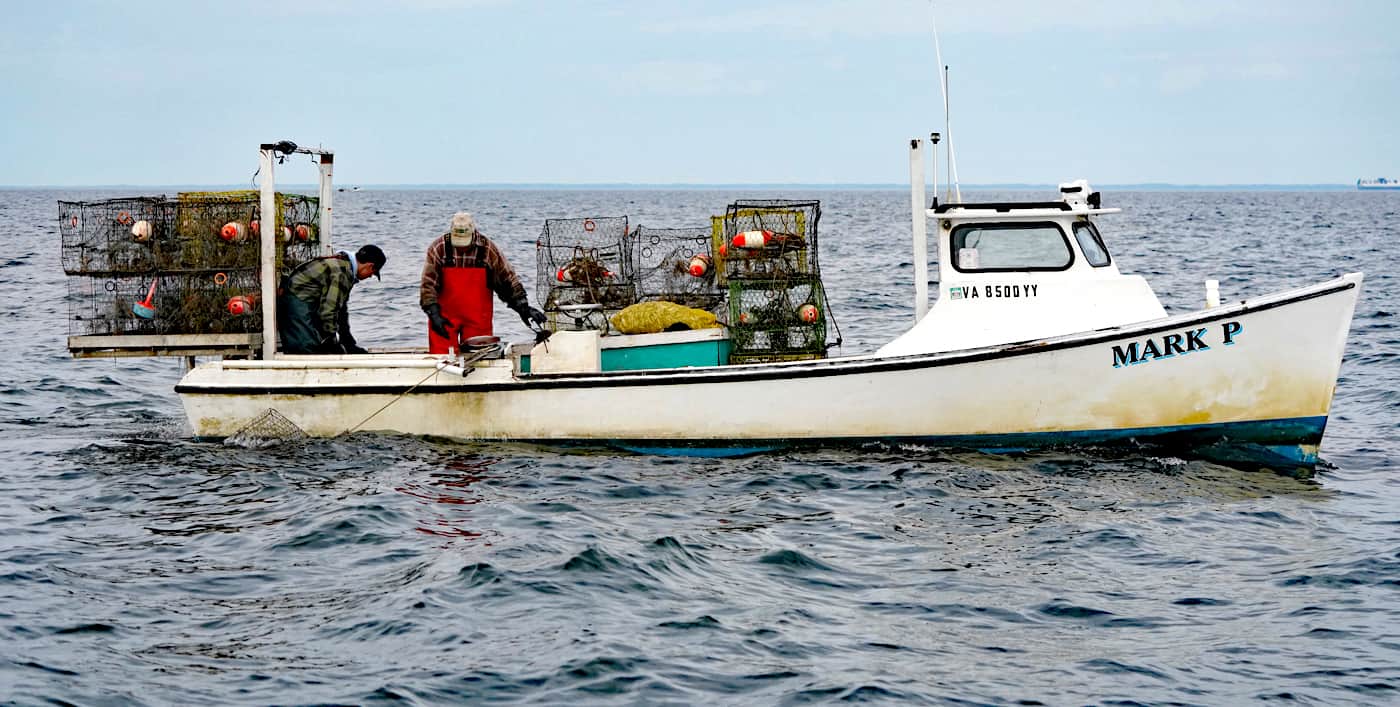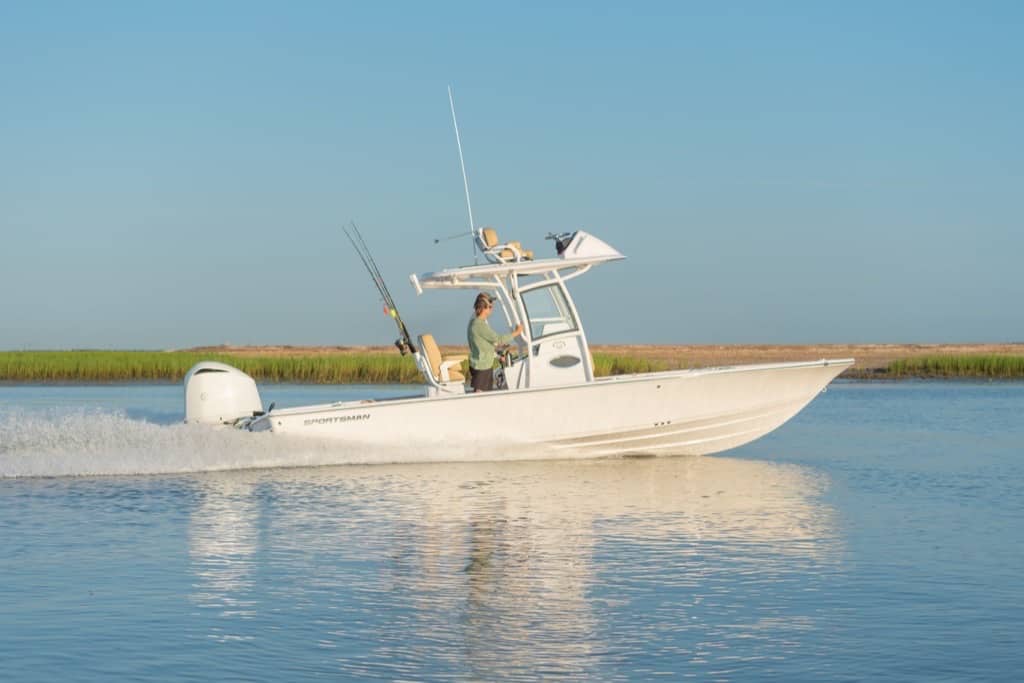Like most boating writers, I am guilty of tossing around a bunch of jargon about the shapes of powerboat hulls. To mitigate that shortcoming, I am providing some thoughts about hull forms, gleaned from hours talking with naval architects, reading magazines, blogs and books, years of crawling around under boats, and a life of watching, running and testing them.
Displacement Hulls
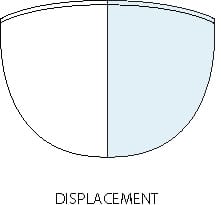
Boats float because their hulls displace a greater weight of water than they weigh themselves, even after we fill them with engines, fuel, water, equipment, and ourselves. A displacement hull moves through the water, pushing it aside in waves that originate at the bow (the bow wave). At slow speeds, all hulls move this way, but there is a physical limit to how fast a bow wave can move, determined by a boat’s length. Thus a longer hull waterline allows a boat to move faster, all other characteristics being equal, but it still has to shove aside the volume of water that it displaces. The general rule is: a hull in displacement mode can move efficiently at 1.0 to 1.3 times the square root of its waterline length. Adding more power to go faster simply drives the hull deeper into its own bow wave, increasing resistance exponentially with minimal gains in speed for the extra power.
Over several millennia, boatbuilders have worked to improve the way these hulls move, whether powered by paddles, oars, sails, or more recently, steam, internal combustion, or electricity. Long, slippery shapes with graceful transoms that release water easily after the hull’s passage have been developed, along with wider versions built to carry large loads. The modern applications for displacement powerboat hulls are cruising trawlers such as those built by Kadey-Krogen and Nordhavn. These hulls are seriously seaworthy, comfortable for living aboard, and very efficient for their size, but they are built to see the world at seven to eight knots. For cruisers moving to them from cruising sailboats, those comfortable speeds are all they want.
Note: There is a niche market for small displacement hulls, especially elegant and quiet electric launches.
Semi-Displacement Hulls
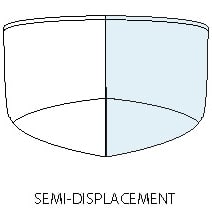
Around the turn of the twentieth century, as internal combustion engines came onto the scene, boatbuilders worked hard to develop faster hulls. For a time, they built narrower hulls and applied more power, but gradually they figured out that hulls with flat or nearly flat surfaces could lift partway onto their bow waves and beat the 1.3 rule. One of the best known designers was Will Frost of Beals Island in Downeast Maine, who built remarkably fast workboats for lobster fishermen and rumrunners in the first half of the 20th century. They were the forerunners of modern New England workboats and so-called lobster yachts. Boats from Lowell Brothers (Will Frost’s great-grandsons), Calvin Beal, Wesmac, and Young Brothers are fine examples. I must note that many of these hulls are now built to lift all the way up to full planing attitude when driven by the kind of brute “horsepowah,” as Belfast, Maine builder Glenn Holland puts it, that began with lobsterboat races but is now common in working rigs as well.
Other coastal workboat builders, especially in the Chesapeake and North Carolina, gradually developed hulls with this semi-planing characteristic. Watch the clean wake behind one of Jerry Frank Pruitt’s graceful 42-foot wooden crab boats running at 18 knots from Tangier to Crisfield for an example. Her sharp bow forefoot will be barely in the water, cleaving the Tangier Sound chop, while the wake flattens out behind her lean hull. It’s no surprise that cruisers, anglers, and charter skippers have adopted these hull forms for their useful speeds, seaworthiness and relative efficiency. Judge, Mathews, Markley, Eastern, and Seaway hulls are examples. In addition, a number of trawler companies, such as Nordic Tug, have developed hulls with these characteristics, and virtually all of the new pocket trawlers from Cutwater, Ranger and Rosborough run this way.
Planing Hulls
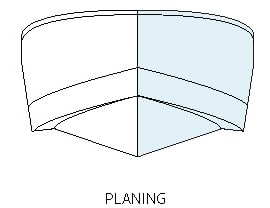
Parallel to those workboats, recreational boat designers and builders began designing hulls that lifted fully onto the water’s surface. Here resistance to speed comes primarily from friction between the area (length x beam) of the hull and the water, and much less by the volume (length x beam x depth) of water it displaces. As a boat’s design size increases, the two-dimensional planing area increases much less than the three-dimensional volume, requiring less power to achieve higher speeds. The downside is that a hull riding on the surface is affected much more by wave conditions. A completely flat bottom will rise onto plane easily, but it will pound against any waves it encounters. The design trick is to work out shapes that cleave seas apart while still allowing a hull to rise easily on top and stay there without requiring gobs of power and fuel.
Over the past seventy years, planing hulls have revolutionized boatbuilding worldwide, allowing much higher speeds. Most boats shown in Chesapeake Bay Magazine today
are planing hulls. Within that category, they come in a range of hull shapes that are constantly evolving to provide the best combinations of speed, efficiency, sea-kindliness and carrying capacity.
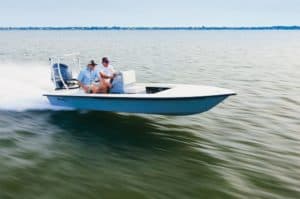
Here’s a rundown on the three basic planing hull designs:
Semi-V hulls
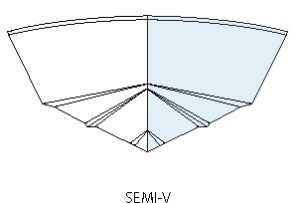 Semi-V hulls represent the earliest planing design category, and they have evolved considerably over the years. In general, they have a shallow deadrise at the transom that becomes progressively deeper going forward to present a sharp bow entry to oncoming seas. The term deadrise (literally, rise above dead-level) refers to the angle at which the bottom rises on each side of the keel. It is used generically to describe Chesapeake Bay-built workboats. The deadrise is the official state boat of Virginia.
Semi-V hulls represent the earliest planing design category, and they have evolved considerably over the years. In general, they have a shallow deadrise at the transom that becomes progressively deeper going forward to present a sharp bow entry to oncoming seas. The term deadrise (literally, rise above dead-level) refers to the angle at which the bottom rises on each side of the keel. It is used generically to describe Chesapeake Bay-built workboats. The deadrise is the official state boat of Virginia.
Semi-V deadrise hulls generally have transom deadrise of 10 to 16 degrees, tapering to around 30 degrees amidships and 40 to 45 degrees at the bow. The magic is in that taper. The advantages are shallow draft, efficiency, and reasonable speed with modest power, but they will pound when driven hard into steep seas. It’s important to trim them fore-and-aft to fit sea conditions, lowering the bow to cleave head seas and trimming up in following seas to prevent the bow from digging in and broaching as the wave pushes the hull sideways. Adjustable trim tabs are useful for getting the best out of these hulls. Semi-V hulls range from workboat-derived skiffs like the May-Craft 1900 and Parker 23SE to the elegant MJM yachts designed by Doug Zurn.
Deep-V Hulls
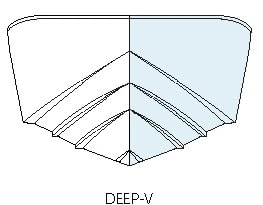
In the 1960s, naval architect Ray Hunt developed a planing Deep-V hull for noted sailor Dick Bertram, who was looking for a fast, rough-water boat to act as a tender for one of his racing yachts. That Hunt hull combined a sharp, 24-degree deadrise in most of the hull with sharp chines and a pair of longitudinal strakes on each side that acted as lifting surfaces. The revolutionary result got Bertram into ocean powerboat racing, which his boats dominated for several years, leading to the development of the iconic Bertram 31 and a long and continuing string of designs from the firm that is now C. Raymond Hunt Associates. The rest is history. Over the past fifty years, designers have refined deep-V hulls to make them more stable at rest and more efficient. The concept endures in everything from the Regulator bluewater fishing boats designed by Lou Codega in Virginia to large C. Raymond Hunt & Associates-designed pilot vessels.
Variable Deadrise Deep-V
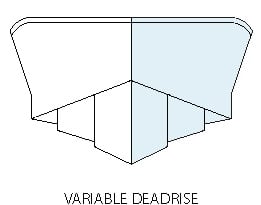
The Variable Deadrise Deep-V was developed by Floridian Carl Mosely in the 1960s for his SeaCraft runabouts. Mosely sold the company to Bill Potter, who developed them as 18- to 25-foot center-console fishing boats. These hulls were sharp on the centerline, but their deadrise flattened out in steps from keel to wide chines to improve stability and efficiency. They proved to be excellent sea boats that revolutionized open water light tackle angling in the late ’60s and ’70s. The brand went through several ownership changes before shutting down. Sailfish Boats builds a similar Variable Deadrise Stepped hull. A number of other designers, including Hunt, include elements of the shape in their work for brands like Grady-White and Southport.
This is not all of it. There are more hull design shapes to consider such as cathedral hulls and power catamarans, which are both displacement and planning designs. We’ll take them up in a future edition.

